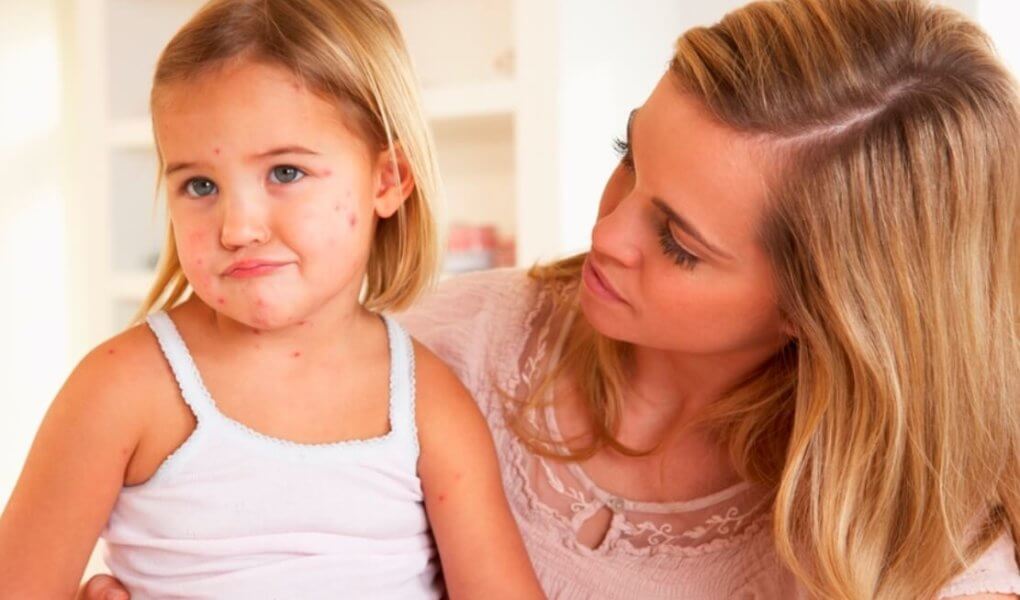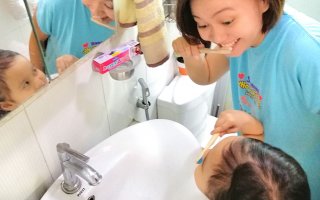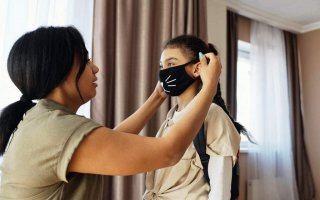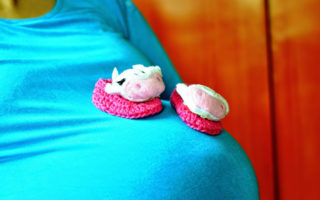As a first time mom, I find not being on top of things quite distressing. One day my daughter has clear skin, then suddenly she has a rash, a bump or swelling!
I remember when she was about two, she had a small red round patch on the thigh that I didn’t recognize. At first I thought it was just from an insect bite, turns out it was eczema.
Well, I thought to share about the most common skin conditions that affect children and the suggested treatments for each so that we’d know what to do.
This post is for informational purposes only.Please remember to always consult your physician for any concerns.
Ringworm
Ringworm is caused by a fungus. It presents as a red patch of scaly bumps that form on the skin in a ring pattern, hence the name – ringworm. It is highly contagious and can spread from child to child by direct contact or by sharing clothes with another infected child.
An over-the-counter antifungal cream may be applied for a mild infection, but a more serious case may need prescription medication. Keep the affected area clean and dry and have the child change clothing every day.
Chickenpox
A chickenpox infection begins with a fever and then progresses to cold-like symptoms, and then a rash. The rash is extremely itchy and appears as a mixture of spots, blisters, and crusty scabs and lasts for a little over a week. A chickenpox infection is contagious until all of the blisters have crusted over.
Treat the itchy spots with calamine lotion; a cool bath using ½ to 1 cup of baking soda can also relieve the irritation. An over-the-counter antihistamine will help in easing the symptoms, but make sure to check the dosage for the age of the child; ask the pharmacist when in doubt.
Scarlet Fever
Scarlet Fever is caused by a streptococcal infection and is very contagious. It begins with a sore throat, fever, and then develops a rash which feels like sandpaper and gradually covers most of the body. If untreated, complications such as rheumatic fever or kidney inflammation could arise.
Although the symptoms will subside in approximately two weeks, it is vital to treat the underlying strep infection with antibiotics; the patient must complete the entire course of medication to ensure that the bacteria have been destroyed.
- For more information check this site: Scarlet Fever
Heat Rash
Heat rash, also known as prickly heat, is the appearance on the skin of tiny red bumps or blisters which arise when a child is overheated and is caused by blocked sweat glands. It isn’t usually painful, but it can be very itchy and tender to the touch.
Cool compresses or baths are helpful; let the child air-dry afterward or use a fan to gently dry them off. Don’t use ointments on the rash unless instructed by your child’s doctor. Heat rash will usually resolve on its own, but seek advice if it lasts more than two or three days.
- For more information check this site: Heat Rash
Eczema
Eczema is a common skin condition that presents as dry, itchy, red patches of irritated skin which are usually found on the cheeks, hands, elbows, and knees. Studies have shown that eczema can be linked to genetics and it appears to be heredity among families who have an ancestral history of eczema, hay fever or asthma.
Although it has no cure, eczema is not contagious and can be controlled with topical steroid creams and oral antihistamines. Instances of eczema that show to be resistant to medications could also be treated with light therapy.
Acne
Acne forms when dead skin cells accumulate in the pore faster than the sebum (oil secreted by the sebaceous gland at the base of a pore) can push them to the surface. The oily sebum gets trapped under the dead skin along with acne bacteria and results in bumps and pimples.
Acne has been linked to hereditary factors and is often made worse by changing hormone levels, stress, or the use of some hair and skincare products. Most acne treatments are topical but severe instances may be treated with oral medication used in combination with the topical creams.
- For more information check this site: Facing Acne.
Hives
Hives appear as small, red, itchy bumps or welts and are the result of an allergic reaction to an allergen such as those found in nuts, shellfish, and some berries. Environmental factors are also a potential source: dust, pet dander, pollen, and insect bites.
Apply cool compresses to ease the itching and treat with antihistamines to alleviate the symptoms. Hives themselves are not harmful, but if the child also begins having trouble breathing, or starts to cough and wheeze, it might signal a dangerous allergic reaction requiring immediate medical attention.
In summary, don’t leave a condition to worsen. If you’re not sure of the exact nature of the disorder, consult a doctor and if prescribed medication, administer it as directed – don’t improvise. Always check the dosage of any over-the-counter medication for the age of the child.
- For more information check this site: Childhood Skin Disorders




